In B2G marketing, trust is everything. Government buyers and influencers rely on credibility, reputation, and expertise when choosing private-sector partners. Traditional marketing tactics like whitepapers and webinars still matter, but one channel is increasingly cutting through the noise: podcasting.
For companies looking to humanize their brand, elevate executives as thought leaders, and reach niche federal audiences, podcasting is proving to be a content play that works.
Why Podcasting Resonates with Public Sector Audiences
Unlike sales pitches or promotional campaigns, podcasts provide a conversational and authentic format. Government leaders and influencers can hear directly from executives in their own voices — building trust through tone, transparency, and thought leadership.
Podcasts also fit the schedules of busy decision-makers. Whether commuting, traveling, or multitasking, federal audiences can consume episodes on their terms. This accessibility gives B2G brands a powerful way to stay top-of-mind.
Industry leaders across defense, aerospace, and IT are already embracing this format, positioning themselves as trusted advisors while shaping conversations on mission-critical topics.
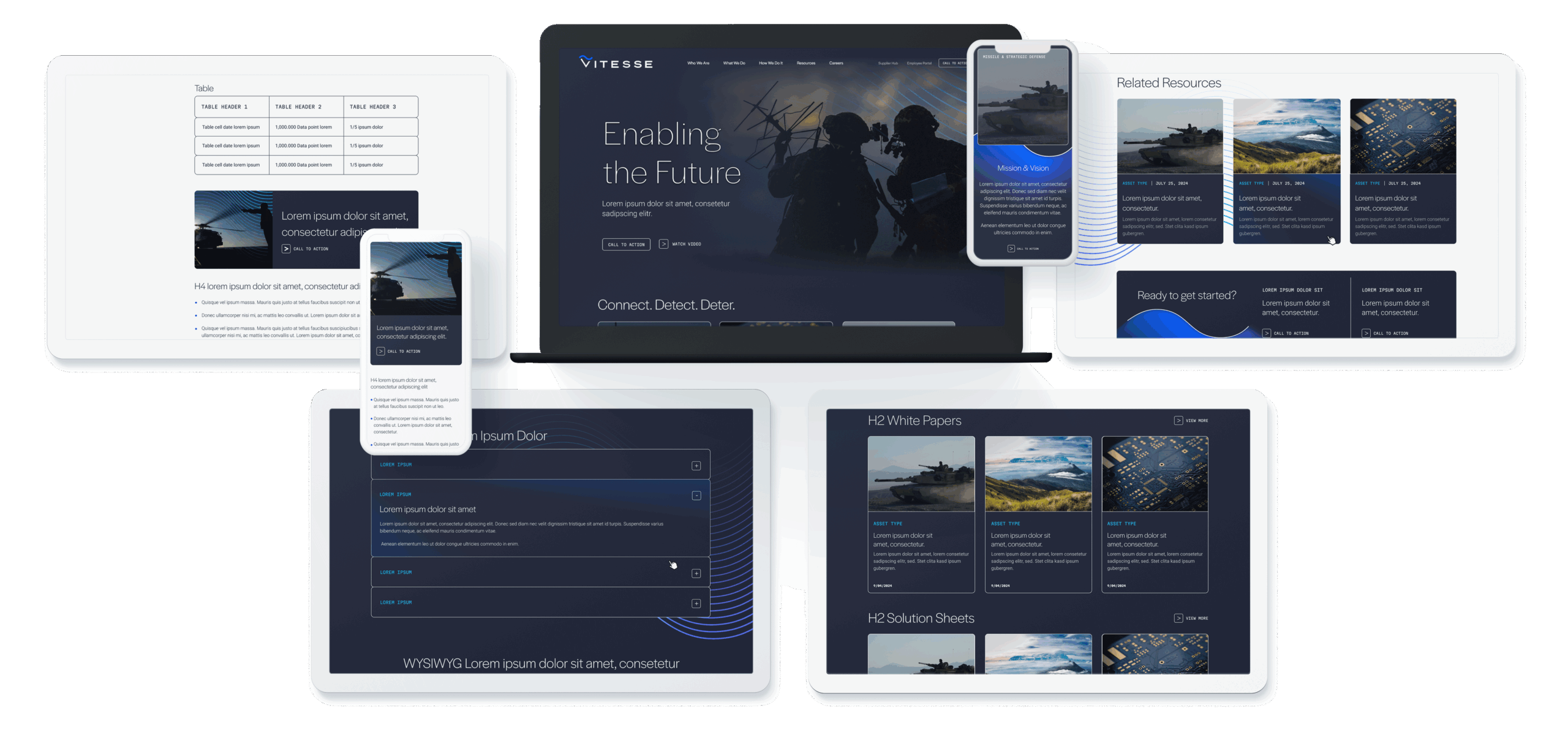
Executive Podcasts as Thought Leadership Tools
One of the strongest advantages of podcasting in the public sector is its ability to amplify executive voices. When leaders host or participate in a podcast, they become credible voices in the GovCon space, reinforcing expertise and authenticity.
These recordings don’t just live as audio. A single episode can be repurposed into:
- Blog posts summarizing key insights
- Social media clips to extend reach
- Quotes and soundbites for marketing campaigns
- Event materials to reinforce messaging
This makes podcasting a content engine that powers multiple channels while maintaining consistency of message.
Strategic Benefits of B2G Podcasting
For public sector marketers, podcasting offers unique strategic advantages:
- Direct access to niche audiences — from federal program managers to defense industry insiders.
- A platform to shape narratives around emerging policy, technology adoption, or mission priorities.
- A trust multiplier by letting audiences hear the human side of executives.
- Content atomization that extends ROI across blogs, email campaigns, and video snippets.
For organizations competing in complex federal markets, podcasts can differentiate a brand by blending thought leadership with authenticity.
How to Build a Successful Public Sector Podcast
Launching a podcast isn’t just about recording conversations — it’s about creating a deliberate strategy.
Define Your Audience and Mission
Clarify which government buyers, influencers, or stakeholders you want to reach and what value you’ll provide them.
Identify Strong Executive Voices
Choose leaders who can speak with authority on topics relevant to federal missions and priorities.
Develop Compelling Themes
Align content with issues that matter most to your audience — cybersecurity, modernization, workforce readiness, or space innovation.
Invest in Production Quality and Consistency
Audio quality, editing, and a regular publishing cadence all contribute to credibility and long-term engagement.
Promote Across Channels
Leverage owned channels (website, newsletters), earned opportunities (media mentions), and paid promotion (LinkedIn ads) to maximize reach.

Challenges and Best Practices
Public sector podcasting comes with considerations. Content must respect compliance guidelines and avoid appearing promotional. The most effective podcasts are educational and mission-focused, not sales-driven.
Best practices include:
- Keeping episodes concise and engaging (20–30 minutes is ideal).
- Featuring a mix of internal and external guests for diversity of thought.
- Building an editorial calendar to sustain content over time.
- Measuring engagement with downloads, listens, and repurposed asset performance.
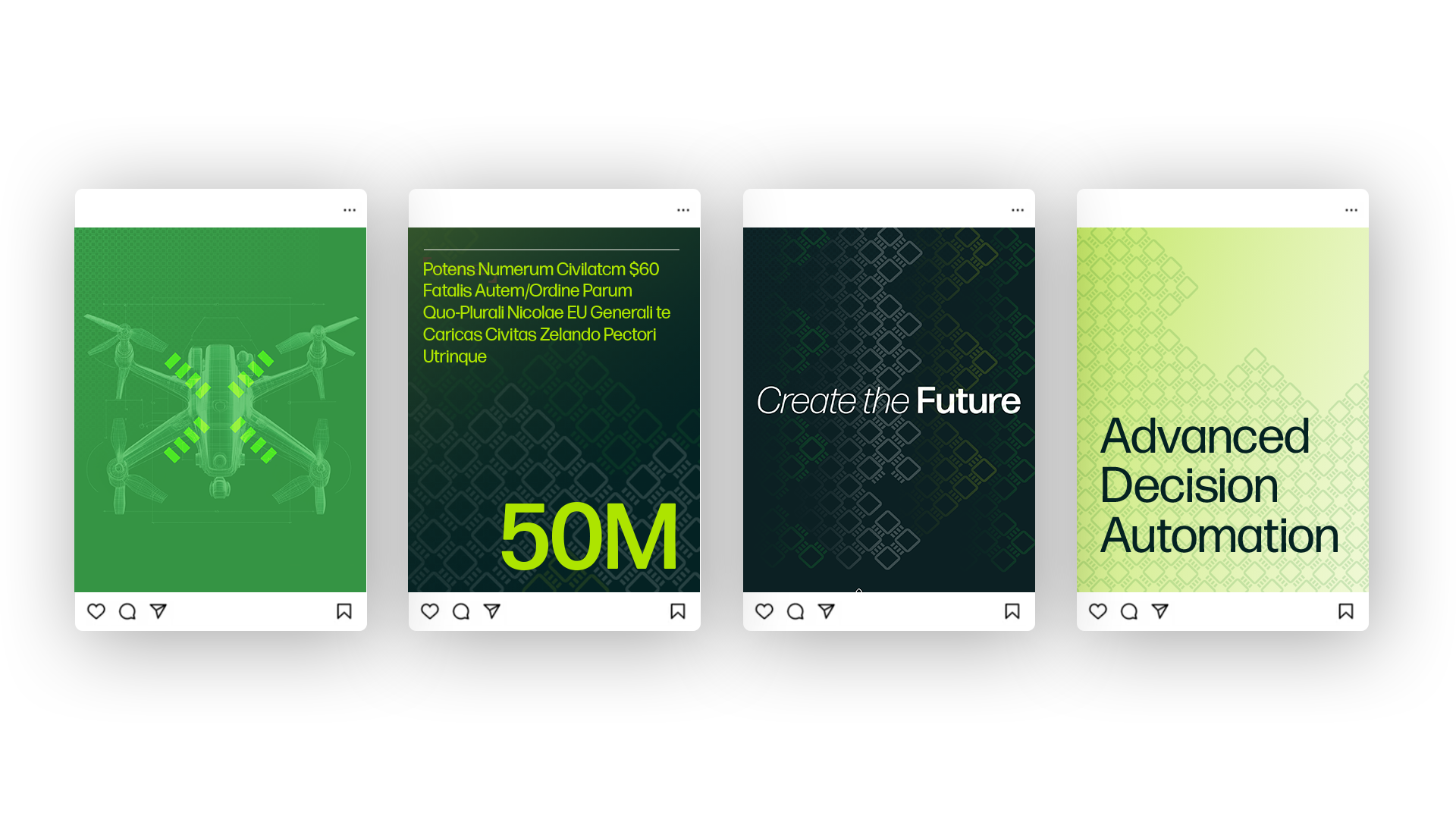
Why Now Is the Time to Invest in B2G Podcasting
The federal market is becoming more digital-first than ever before. As agencies seek new ideas and trusted partners, executive voices delivered through podcasts offer authenticity and thought leadership that government buyers value.
B2G companies that embrace this medium today will be better positioned to build credibility, influence conversations, and strengthen relationships in tomorrow’s competitive environment.
Ready to Launch a Podcast That Resonates?
Podcasting is no longer an experimental channel for public sector marketing — it’s a proven way to build trust and amplify executive thought leadership.
Ready to launch a podcast that resonates with government audiences? Contact Bluetext to start building a B2G podcast strategy that works.
In today’s marketing landscape, brands are under constant pressure to produce more content, faster. Audiences expect fresh insights across blogs, social channels, email campaigns, and multimedia platforms. But scaling content production sustainably—without diluting quality—remains one of the biggest challenges for marketing teams.
That’s where content atomization comes in. At its core, content atomization is the process of transforming one “big idea”—like a whitepaper, webinar, or research report—into dozens of derivative deliverables. It’s not about recycling or copy-pasting. It’s about strategically repurposing content into formats tailored for different channels, audiences, and stages of the buyer journey.
In this playbook, we’ll break down how to turn a single asset into a full campaign ecosystem, outline best practices to follow, and highlight common pitfalls to avoid.
What Is Content Atomization and Why It Matters
Content atomization is the practice of breaking down a larger piece of content into smaller, more focused assets. For example, a 20-page research report might become a three-part blog series, a webinar, a handful of infographics, a podcast episode, and a set of social media posts.
The benefits are clear:
- Scalability – One idea can fuel a month or more of campaigns.
- Efficiency – Reduce the time and resources needed to create net-new content.
- Message consistency – Ensure a unified brand narrative across platforms.
- ROI – Extend the lifespan and impact of flagship content investments.
In a world where marketing teams face increasing pressure to be “always on,” content atomization provides a framework for digital marketing efficiency without sacrificing quality.
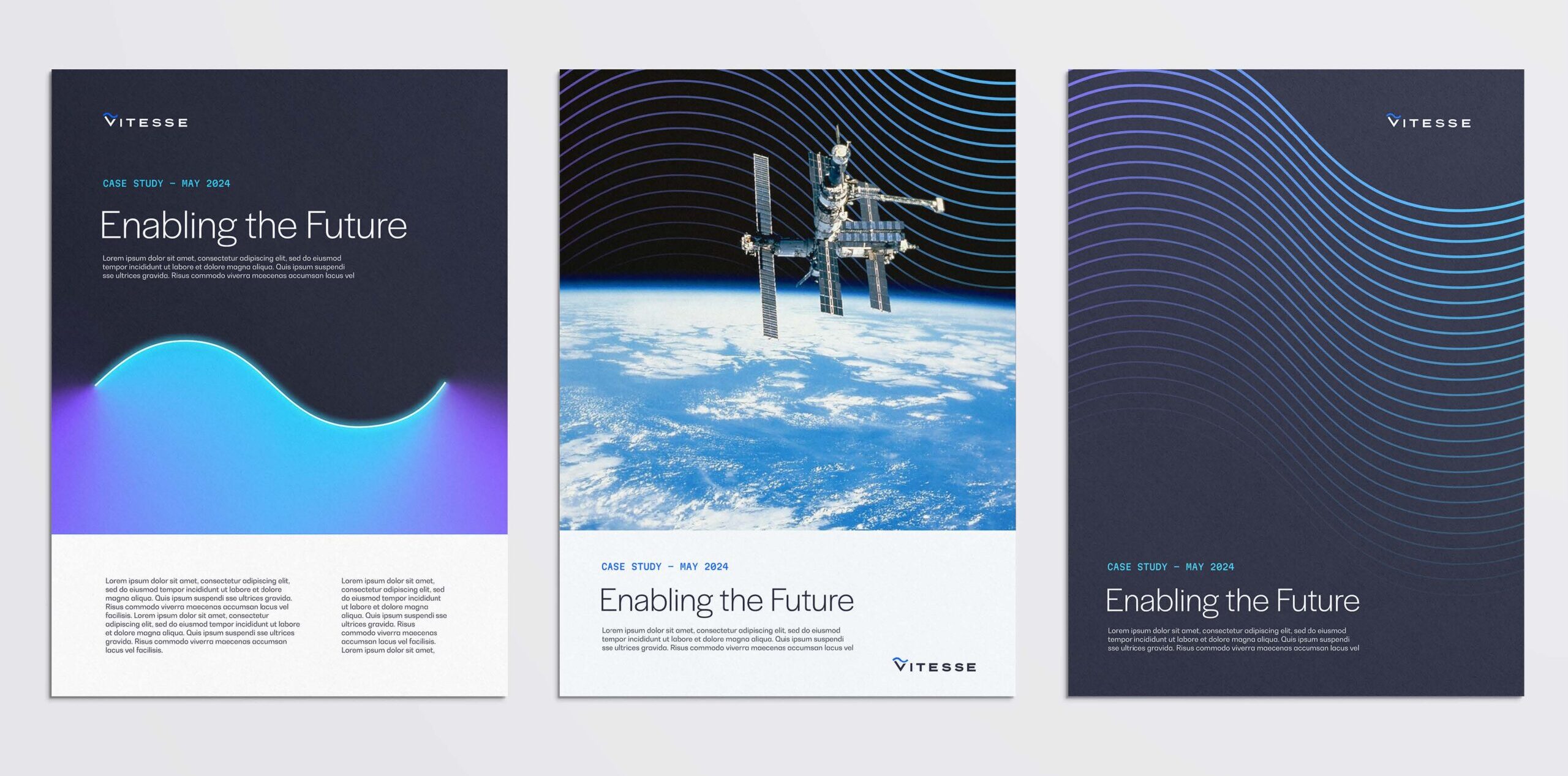
The Content Atomization Framework
Think of content atomization as a hub-and-spoke model. At the hub sits your core asset—a whitepaper, webinar, keynote, or research report. From there, spokes radiate outward into derivative assets that extend the core message into different channels and formats.
Core Asset (The Big Idea)
Your atomization strategy begins with one substantial piece of content. This could be:
- A research-driven whitepaper
- A recorded webinar or virtual panel
- A keynote presentation
- A case study or success story
This core asset is your intellectual “pillar” that everything else builds from.
Derivative Assets
Here’s how a single core asset can splinter into dozens of deliverables:
- Blogs & Articles – Break down sections into topic-specific posts optimized for search.
- Social Content – Extract key quotes, statistics, and visuals for LinkedIn, X, and Instagram.
- Thought Leadership – Draft contributed articles or op-eds drawing from core themes.
- Email Campaigns – Create nurture sequences that tease insights and drive downloads.
- Infographics & Visuals – Translate data-heavy sections into shareable graphics.
- Video & Audio – Clip webinar highlights into short-form videos or podcast segments.
- Interactive Assets – Turn research into calculators, quizzes, or gated interactive tools.
The beauty of this model is that one initial investment produces a multi-channel marketing ecosystem—meeting audiences where they are with content that feels purpose-built.
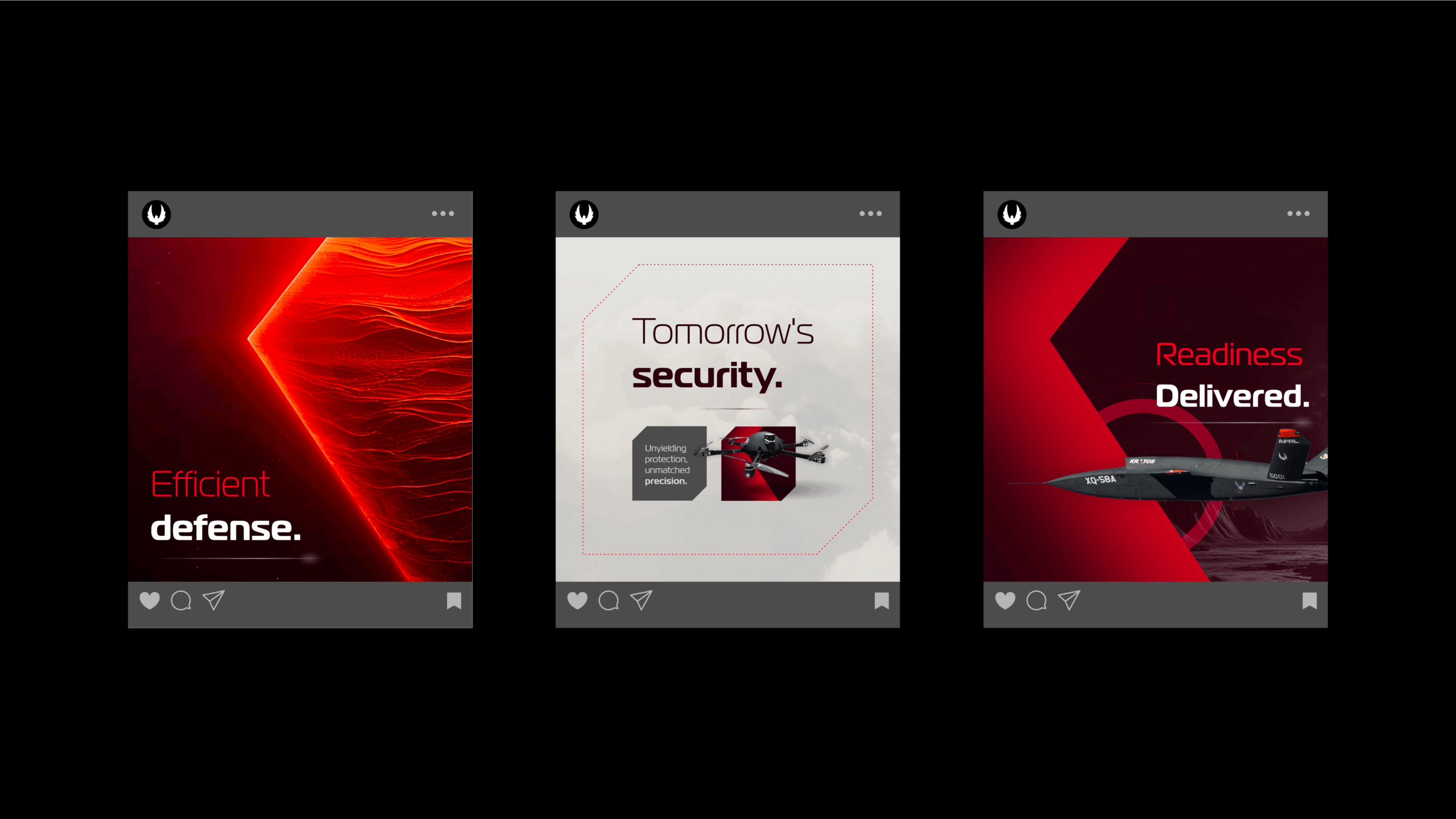
Real-World Examples of Content Atomization in Action
To illustrate, let’s look at two scenarios where brands can apply this approach:
Example 1: Whitepaper Atomization
- A cybersecurity company develops a whitepaper on emerging threats.
- The whitepaper becomes:
- Three blog posts on specific threat categories
- An infographic visualizing attack trends
- A webinar with subject matter experts
- A LinkedIn carousel highlighting key statistics
- A nurture email sequence linking to each derivative piece
Example 2: Webinar Atomization
- A SaaS brand hosts a webinar on customer experience trends.
- From the recording, the marketing team creates:
- A recap blog post with takeaways
- Short video clips optimized for LinkedIn
- A thought leadership article by the webinar host
- A podcast episode edited from the Q&A session
- A set of sales enablement slides for the field team
In both cases, the original asset fuels an entire campaign ecosystem—maximizing reach while reducing the demand for net-new production.
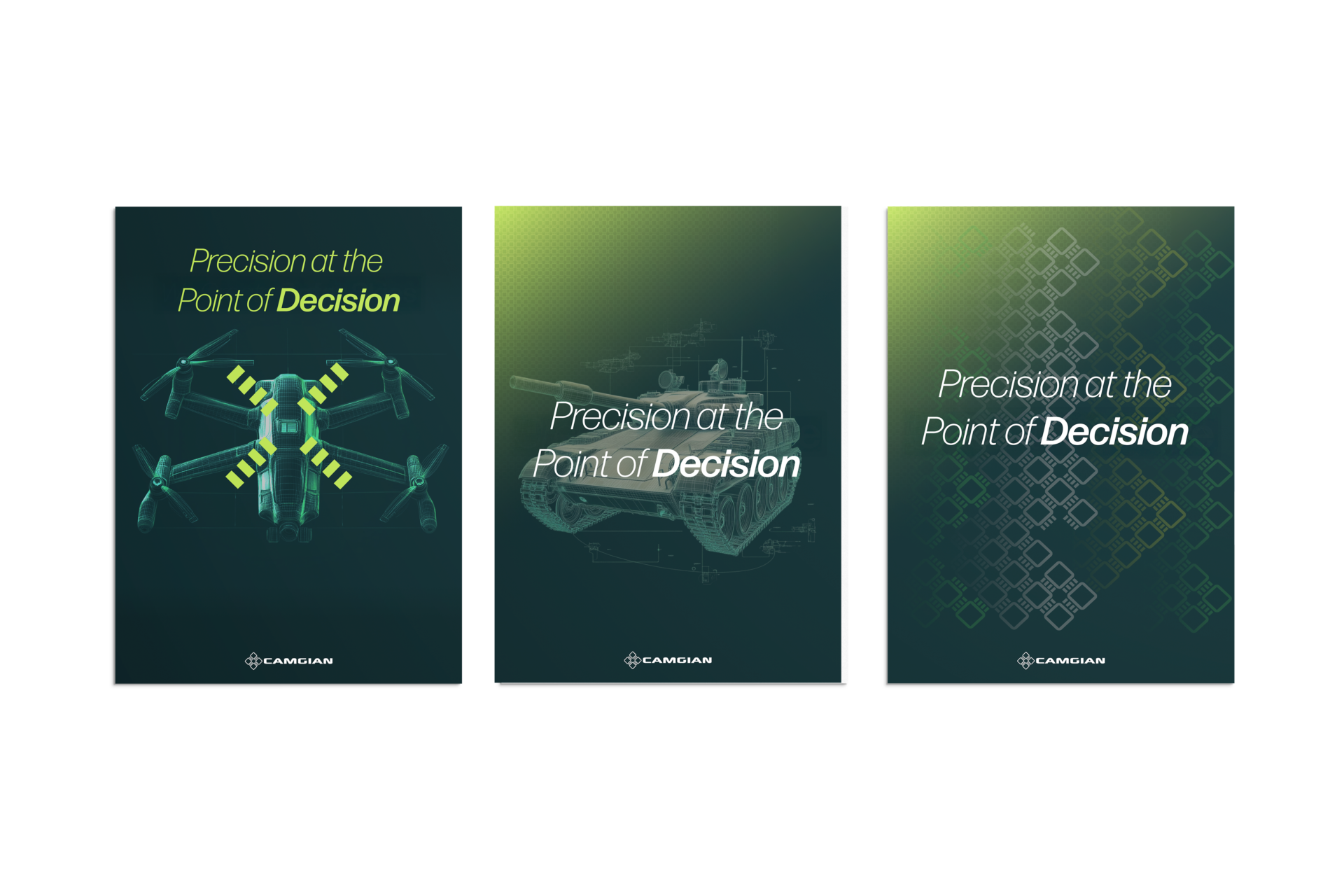
Best Practices for Scaling Your Content Atomization Strategy
While the concept is straightforward, executing content atomization effectively requires discipline. Here are best practices to guide your approach:
- Start with a strong “pillar” asset. Choose an idea that is broad enough to support multiple derivatives and relevant enough to resonate across buyer stages.
- Map assets to the buyer journey. Ensure derivative content addresses awareness, consideration, and decision-making phases.
- Adapt to each channel. Don’t simply repost—customize tone, format, and length for blogs, social, and video.
- Leverage analytics. Use engagement metrics to prioritize which derivative formats perform best with your audience.
- Maintain consistency. Keep design, voice, and key messages aligned across all pieces to reinforce the campaign.
- Use AI wisely. Artificial Intelligence tools can accelerate drafting and formatting but should be guided by brand voice and editorial oversight.
When done right, atomization amplifies your reach without sacrificing quality or cohesion.
Common Mistakes to Avoid
Content atomization can be powerful, but there are traps to watch for:
- Republishing instead of repurposing. Copying text from one channel to another rarely works. Content must be reshaped for its audience and format.
- Lack of channel-specific optimization. A LinkedIn carousel should look and feel different from a blog post or nurture email.
- Ignoring SEO. Each derivative piece should be optimized with keywords, metadata, and internal links to strengthen discoverability.
- Overproduction without strategy. Don’t create derivative assets for the sake of volume—prioritize formats your audience values most.
Avoiding these pitfalls ensures that your atomization efforts drive real results rather than just more content.

Building Your Own Content Atomization Playbook
So how can your team put this into practice? Start by developing a repeatable playbook:
- Identify the core asset. Whitepaper, webinar, or report.
- Audit potential derivatives. Map out blogs, social, emails, and visuals.
- Align with the buyer journey. Match content to awareness, consideration, and decision stages.
- Develop a rollout plan. Stagger content releases to sustain engagement over time.
- Measure and refine. Track performance to see which atomized pieces resonate most.
By creating a systematic process, you can ensure that every major content investment continues to pay dividends long after launch.
Maximizing the Value of Every Idea
Marketing teams don’t always need to chase the next “big idea.” Often, the smartest move is to extract more value from the ideas you already have. Content atomization offers a roadmap for doing exactly that—fueling multi-channel campaigns, ensuring message consistency, and maximizing ROI.
At Bluetext, we help brands design and execute content marketing frameworks that scale. From developing high-impact core assets to rolling out full atomization ecosystems, our team ensures that one idea becomes dozens of deliverables—without sacrificing quality or creativity.
Looking to maximize the value of your content? Bluetext helps brands transform big ideas into multi-channel campaigns that drive results. Contact us today.
The only constant in marketing is change. Platforms evolve, budgets tighten, algorithms shift, and buyer behavior grows more complex by the quarter. For brands reliant on rigid campaigns or single-channel tactics, these changes can upend even the most carefully laid plans.
That’s why marketers today must focus on future-proofing their funnels. Instead of chasing the next quick fix, resilient organizations design strategies that adapt, campaigns that flex, and content frameworks that hold up in times of uncertainty. Future-proofing isn’t about predicting every twist and turn—it’s about building the agility to withstand them.
Why Future-Proofing Your Funnel Matters
The risks of not preparing are real. A sudden change to Google’s algorithm can slash your organic reach. A downturn in the economy can freeze budgets and elongate sales cycles. Shifts in social media platforms can alter how buyers discover and evaluate solutions.
In B2B especially, where long decision cycles and high-stakes purchases dominate, a fragile funnel can quickly dry up. On the other hand, brands that adapt fast capture market share. By prioritizing resilience and agility, marketers can keep pipeline steady—even when external forces are unpredictable.
How to Build Agile Campaigns
Agility starts with campaign design. Traditional “set it and forget it” marketing no longer works when conditions can change overnight. Instead, marketers should:
- Iterate and optimize continuously. Shorten campaign cycles and test variables regularly.
- Leverage real-time data. Use dashboards and analytics to spot performance changes early.
- Build modular campaigns. Design assets that can be repurposed, scaled up, or scaled back depending on need.
This agile mindset keeps campaigns aligned with current buyer realities while maintaining the flexibility to pivot quickly.

Designing Flexible Content Frameworks
If campaigns are the fuel, content is the engine. To future-proof your funnel, content must be both adaptable and evergreen.
- Evergreen content as a foundation. Assets like thought leadership blogs, explainer videos, and white papers hold value regardless of market shifts.
- Repurposing strategies. A single webinar can become blog posts, short-form videos, infographics, and social campaigns—stretching value across channels.
- Evolving with buyer needs. Content frameworks should be broad enough to adapt as buyer pain points change, while still specific enough to drive relevance.
The goal is a flexible content library that feeds the funnel consistently, no matter the channel or trend of the moment.
Adapting to Evolving Buyer Behavior
Today’s B2B buyers don’t follow a linear journey. They self-educate, compare across platforms, and consult multiple stakeholders before making decisions. Future-proof funnels must reflect this reality:
- Be omnipresent. Ensure your brand is discoverable across digital touchpoints, from LinkedIn to search to industry forums.
- Prioritize personalization. Tailor messaging based on industry, role, and intent signals.
- Enable self-service. Provide demos, calculators, and resources that let buyers explore at their own pace.
By aligning with how buyers want to engage, marketers stay relevant regardless of external shifts.

Measuring Funnel Resilience
How do you know if your funnel is future-proof? Look for signs of flexibility and sustainability:
- Conversion velocity. Are leads moving through stages efficiently, or getting stuck when conditions change?
- Pipeline diversity. Are you reliant on one or two channels, or do you have a mix of demand sources?
- Multi-touch attribution. Do you understand which touchpoints are most effective at each stage?
Early warning signs—like sharp drops in inbound leads after a platform update—signal funnel fragility. Tracking resilience-focused KPIs helps you pivot before major disruption hits.
Best Practices to Withstand Change
Resilient funnels don’t happen by accident—they’re the product of intentional design. To strengthen yours:
- Diversify channels. Don’t overinvest in a single source of traffic or leads.
- Build cross-functional alignment. Marketing and sales should collaborate continuously to refine messaging and prioritize accounts.
- Adopt agile technologies. Automation platforms, AI-driven analytics, and CRM integrations allow for faster pivots and real-time insights.
- Plan for scenarios. Develop “what-if” strategies for potential shifts in buyer behavior or industry trends.
These practices not only protect against disruption but also accelerate growth during periods of stability.
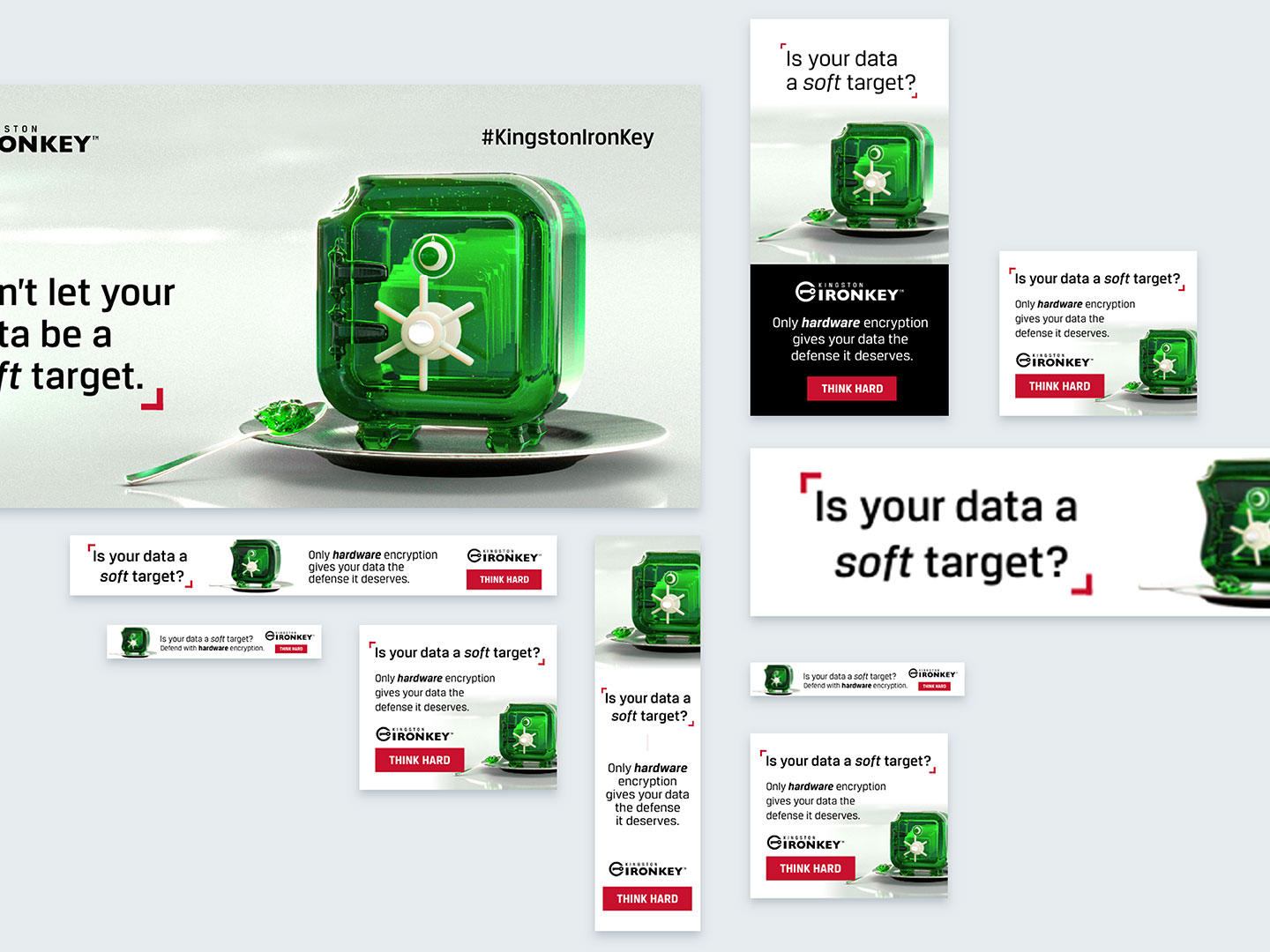
Resilience as a Competitive Advantage
Future-proofing your funnel isn’t about eliminating uncertainty—it’s about building marketing systems that thrive in spite of it. The brands that win in the years ahead won’t necessarily be the biggest or loudest. They’ll be the most adaptable.
By embracing agility in campaigns, flexibility in content, and responsiveness to buyer behavior, marketers can turn resilience into a true competitive advantage.
If your organization is ready to future-proof its funnel, Bluetext can help you design agile campaigns and flexible frameworks that withstand disruption and drive sustainable growth. Contact us today.
Government contracting is a high-stakes, highly competitive market. With more government buyers turning to AI-powered generative search tools to quickly find trusted vendors and solutions, Answer Engine Optimization (AEO) has become a critical strategy for GovCon firms. AEO ensures your capabilities, certifications, and past performance are prominently featured in AI-generated procurement insights.
Why AEO is a Game Changer for GovCon Firms
Generative AI engines prioritize content that is structured, authoritative, and aligned with the specific needs of government procurement officers. Optimizing for AEO means your firm can:
- Increase visibility in AI-powered contract searches.
- Clearly communicate your compliance and certifications.
- Provide quick, AI-friendly access to past performance and capabilities.
AEO Strategies Tailored for GovCon
1. Publish Detailed Capability Statements
Create well-organized pages that succinctly describe your services, certifications, and unique differentiators, formatted for easy AI extraction.
2. Develop FAQ Sections Targeted at Procurement Queries
Anticipate government buyers’ common questions and provide concise, authoritative answers on contract processes, compliance, and requirements.
3. Use Schema Markup to Highlight Contract Awards and Partners
Structured data can showcase your contract wins, strategic partnerships, and affiliations, signaling credibility to AI engines.
4. Share Data-Driven Past Performance Case Studies
Provide detailed, metrics-focused examples of successful government projects to help AI systems assess your qualifications.
5. Maintain Up-to-Date Compliance Information
Regularly update content on certifications, registrations (like SAM.gov), and regulatory compliance to stay relevant in AI-generated results.
Benefits of AEO for GovCon Firms
- Improves discoverability by procurement officers using AI chatbots.
- Shortens the procurement research cycle with AI-summarized insights.
- Positions your firm as a trusted, capable partner in government contracting.
Challenges and Tips for Effective AEO in GovCon
- Avoid overly technical language that confuses AI.
- Keep content factual and regularly updated.
- Ensure your website architecture supports easy navigation and AI indexing.
Answer Engine Optimization is transforming how GovCon firms connect with government buyers in an AI-driven marketplace. By investing in AEO today, you can gain a critical advantage in winning contracts and building lasting government relationships.
Bluetext specializes in helping GovCon firms master AEO strategies tailored for the unique demands of government procurement. Contact us to get started on your AEO journey.
In B2B marketing, subject matter experts (SMEs) are a company’s hidden superpower. Their expertise can position your brand as an authority, but without visibility, insight alone rarely moves the needle. That’s where LinkedIn Paid campaigns come in. By strategically amplifying SMEs’ content, organizations can turn thought leadership into a measurable engine for demand generation, simultaneously building brand authority and generating qualified leads.
The key is balance: authentic, insightful content combined with paid amplification ensures SMEs are seen by the right audience at the right time, without losing credibility or sounding overtly promotional.
Identifying the Right Subject Matter Experts for Amplification
Not every internal expert is naturally suited to public-facing thought leadership. Effective SMEs for LinkedIn campaigns typically:
- Possess deep industry knowledge relevant to your target audience
- Communicate clearly and persuasively in written or video formats
- Are enthusiastic about sharing insights externally
Aligning SMEs with both business goals and audience personas ensures their content addresses real pain points and resonates with potential buyers. Additionally, internal processes for content approval and compliance should be defined upfront to maintain consistency and brand integrity.
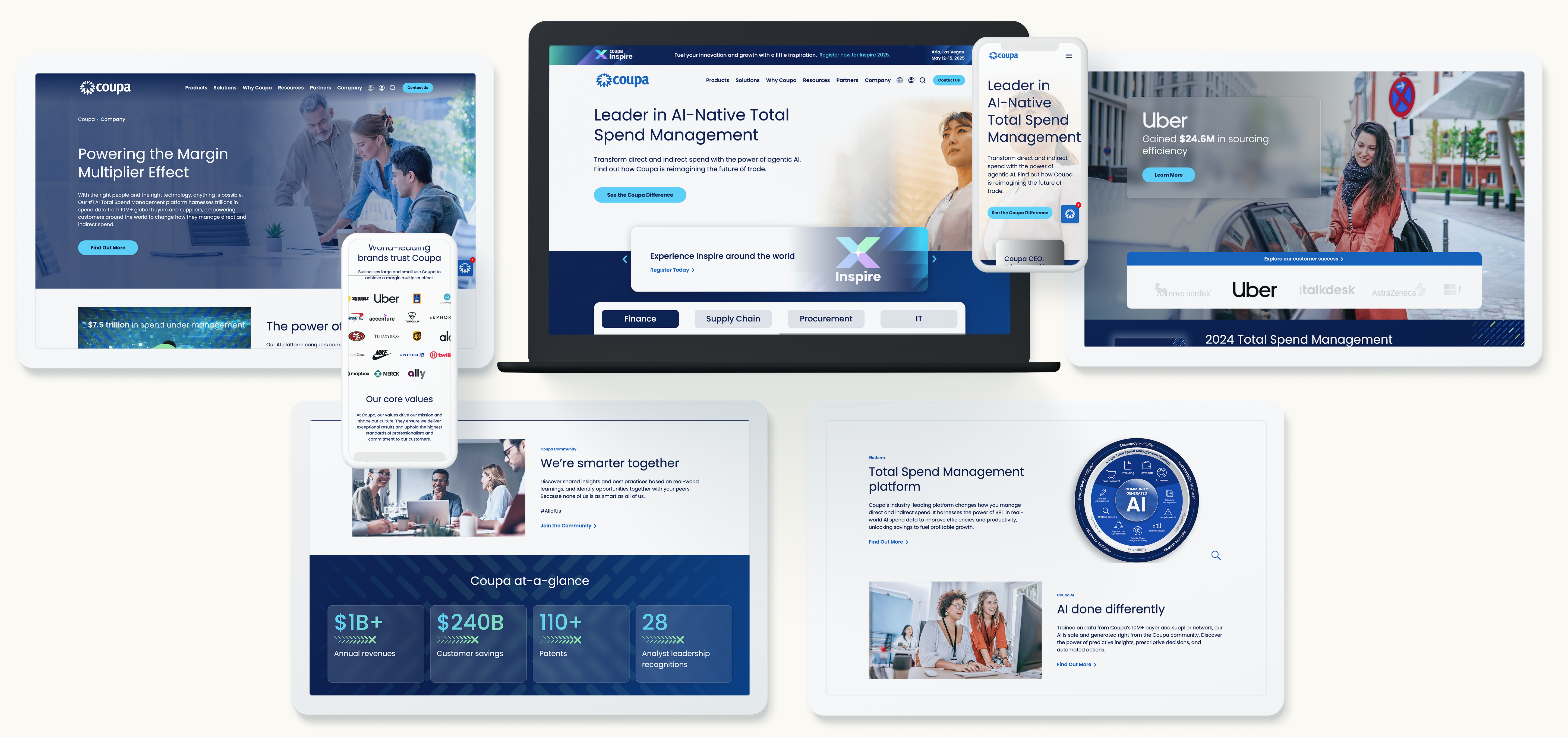
Crafting Content That Resonates on LinkedIn
The most successful LinkedIn campaigns start with content that is:
- Insightful and actionable: Industry trends, lessons learned, or innovative solutions
- Visually engaging: Slide decks, infographics, and carousel posts
- Digestible: Short, well-structured posts or video snippets for busy professionals
Repurposing internal expertise into formats optimized for LinkedIn engagement helps SMEs reach audiences efficiently while establishing authority. For instance, a technical expert can transform a complex whitepaper into a concise slide deck that highlights key takeaways for decision-makers.
Designing Paid LinkedIn Campaigns for Maximum Impact
Paid campaigns allow marketers to extend the reach of SME content beyond organic followers. Key components include:
Audience Segmentation
Targeting should be precise: decision-makers, industry peers, and relevant professional groups. Use LinkedIn filters such as role, seniority, company size, and industry to ensure content reaches the right people.
Campaign Objectives
- Awareness: Boost SME visibility and brand credibility
- Engagement: Encourage likes, comments, shares, and content interactions
- Conversion: Capture leads through webinar registrations, downloads, or demo requests
Budget and Bidding Strategy
Start with modest budgets to test performance, then scale successful campaigns. LinkedIn offers bidding options optimized for engagement or lead generation depending on your objectives.
Ad Creative Tips
- Showcase the authentic voice of the SME
- Include a clear call-to-action linking to gated content or lead capture forms
- Use compelling visuals, charts, or infographics to reinforce authority

Measuring Success: From Authority to Pipeline
To ensure SMEs drive tangible business results, track both brand authority and demand metrics:
- Thought leadership metrics: Post views, likes, shares, and comments
- Demand generation metrics: Click-throughs, webinar registrations, form fills, and ultimately qualified leads
Setting up conversion tracking between LinkedIn campaigns and your CRM allows teams to quantify ROI and refine strategies based on what drives engagement and pipeline growth.
Optimizing and Scaling SME Campaigns
Continuous improvement ensures long-term impact:
- A/B test different content types, messaging angles, and ad formats
- Use retargeting to nurture previously engaged audiences
- Expand campaigns to additional SMEs or regional markets while maintaining authenticity
Scaling requires consistency: every SME’s voice should align with brand messaging while reflecting their unique expertise.
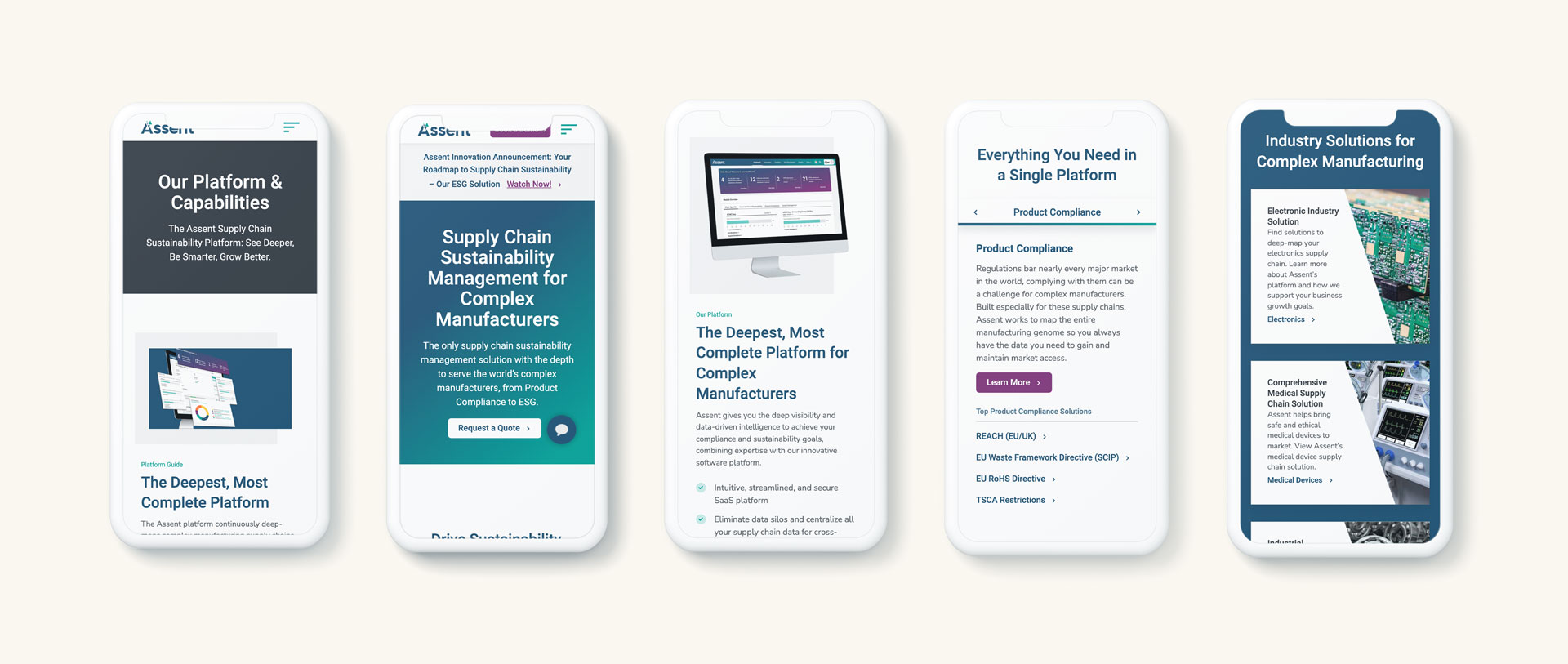
Best Practices and Compliance
Effective campaigns adhere to professional and ethical standards:
- Follow LinkedIn content guidelines and industry regulations
- Ensure SME messaging aligns with brand voice and approvals
- Avoid over-promotion; focus on insight and thought leadership to maintain credibility
Unlocking the Full Potential of LinkedIn Paid for Thought Leaders
When executed strategically, paid LinkedIn campaigns transform internal SMEs from quiet experts into demand-generating engines. Coordinated campaigns deliver:
- Brand authority: Positioning your organization as a leader in your field
- Pipeline growth: Driving engagement, leads, and conversions
Bluetext helps B2B marketers amplify their experts on LinkedIn to drive both authority and pipeline. Contact us to transform your thought leaders into demand engines.
Cybersecurity is a field where accuracy, trust, and timely information are paramount. As government agencies, enterprises, and individuals increasingly rely on AI-powered generative engines to seek security advice and solutions, cybersecurity companies must adapt by optimizing their digital content for these AI platforms. This process, known as Answer Engine Optimization (AEO), helps ensure your brand is seen as authoritative and reliable in AI-driven search results.
What Makes AEO Essential for Cybersecurity Firms?
Generative AI models rank content based on context, relevance, and trustworthiness. For cybersecurity companies, this means producing clear, accurate, and detailed content that addresses complex security topics without overwhelming AI engines or users. AEO enables your firm to:
- Educate potential clients effectively.
- Build brand authority in a crowded market.
- Increase visibility in AI-powered searches related to cyber threats, compliance, and best practices.
Key AEO Best Practices for Cybersecurity
1. Publish Actionable Threat Analyses
Regularly update your website with clear, concise analyses of current cybersecurity threats, trends, and mitigation strategies. AI engines prioritize up-to-date, fact-based content.
2. Develop Glossaries and FAQs for Industry Jargon
Help AI models understand complex cybersecurity terms by creating well-organized glossaries and FAQs that explain acronyms, technologies, and regulations.
3. Use Structured Data to Highlight Certifications
Implement schema markup to showcase your company’s certifications, compliance standards, and awards, increasing trust signals to AI engines and users.
4. Share Data-Driven Case Studies
Demonstrate your expertise and results with detailed case studies that provide specific metrics and outcomes, helping AI systems validate your authority.
5. Write for Clarity and Precision
Avoid overly technical language where possible and focus on delivering clear, precise explanations to assist AI comprehension and user understanding.
The Role of AEO in Cybersecurity Marketing
Adopting AEO tactics can transform your cybersecurity marketing by:
- Improving your content’s chance of being cited by AI in answer boxes and chatbots.
- Enhancing educational outreach to prospects and stakeholders.
- Strengthening trust and credibility through authoritative content signaling.
Avoiding Common AEO Mistakes
- Don’t overstuff keywords or jargon, which can confuse AI engines.
- Avoid publishing outdated security info that undermines your credibility.
- Ensure your site loads quickly and is mobile-friendly for better AI indexing.
The cybersecurity landscape demands precision and trust—two qualities that AEO optimization amplifies for AI-driven search. Bluetext is ready to help cybersecurity firms build content strategies that excel in the generative AI era. Reach out to us to start securing your AI search presence.
In B2G marketing, one-size-fits-all approaches are no longer enough. Government procurement processes are complex, multi-layered, and highly regulated, involving diverse stakeholders from contracting officers to program managers to end users. To succeed, marketers must embrace B2G personalization—strategically tailoring content and messaging that speaks directly to each decision-maker, without crossing ethical or regulatory boundaries.
When done correctly, personalization in B2G isn’t about flashy gimmicks or invasive targeting—it’s about relevance, trust, and clarity. Agencies respond best when content demonstrates a clear understanding of their mission, priorities, and pain points. Marketers who master this approach can influence procurement decisions, build stronger relationships, and ultimately increase win rates on RFPs.
Understanding the B2G Procurement Landscape
Government procurement is inherently complex. Each contract often involves a network of stakeholders, each with unique priorities:
- Contracting officers oversee compliance, budgets, and timelines.
- Program managers focus on technical requirements, implementation feasibility, and outcomes.
- Technical evaluators and end users scrutinize usability, interoperability, and functionality.
Marketing without this insight risks producing generic content that falls flat. Successful B2G personalization starts by mapping these roles and understanding when and how each interacts with your messaging.
Equally critical is recognizing the regulatory environment. The Federal Acquisition Regulation (FAR) and agency-specific ethical guidelines dictate what marketers can and cannot communicate. Personalization must operate within these guardrails, leveraging publicly available information and research to craft meaningful engagement.

Personalization in B2G—What It Is and What It’s Not
Personalization in B2G marketing is not consumer-style microtargeting. It’s a strategic, research-driven approach:
- What it is: Tailoring messaging based on agency priorities, procurement stage, and stakeholder role.
- What it isn’t: Using invasive data tracking, scraping private information, or attempting to influence decisions unethically.
Compliant personalization leverages public data: agency websites, budget reports, RFP histories, FOIA-accessible records, and professional networks. For example, when marketing an IT modernization solution, contracting officers may prioritize cost control, while program managers value interoperability and risk mitigation. The same solution can be framed differently depending on the stakeholder, ensuring your content resonates at every level.
Tactics for Tailored Content That Influences Procurement Decisions
1. Role-Based Content Mapping
Develop content for each stakeholder’s unique questions and priorities. Examples include:
- Technical whitepapers for evaluators
- ROI calculators for financial reviewers
- Solution briefs emphasizing mission alignment for program managers
2. Agency-Specific Messaging
Research the mission, mandate, and ongoing initiatives of your target agency. Tailor your content to demonstrate how your solution supports their objectives, not just your product features.
3. Bid Cycle Timing
The timing of your engagement matters. Thought leadership pieces can educate early in the procurement cycle, while targeted solution demos or case studies provide actionable proof when RFPs are active.
4. Content Formats That Resonate
Use formats that engage stakeholders efficiently:
- Interactive case studies demonstrating measurable outcomes
- Webinars with subject matter experts to address technical questions
- Capability briefs highlighting relevant prior projects
The goal is to provide proof of performance that builds trust and confidence among decision-makers.

Leveraging Data—Within Ethical & Regulatory Bounds
Marketers can use data ethically to enhance personalization. Useful sources include:
- SAM.gov opportunity listings and historical contracts
- Agency budget and strategy reports
- Public remarks or statements from agency leadership
- Industry research and public surveys
Tools like CRM platforms, analytics dashboards, and AI-driven insights can help map stakeholder journeys without violating compliance standards. The key is using data to understand needs and priorities, not to bypass ethical guidelines.
Measuring the Impact of B2G Personalization
Tracking the effectiveness of personalized campaigns is critical. Metrics to monitor include:
- Increased engagement from targeted agencies
- Shorter education-to-conversion timelines for procurement decisions
- Higher win rates on RFPs where tailored content was deployed
Feedback loops, such as surveys or post-award debriefs, provide actionable insights to refine messaging and improve future campaigns.
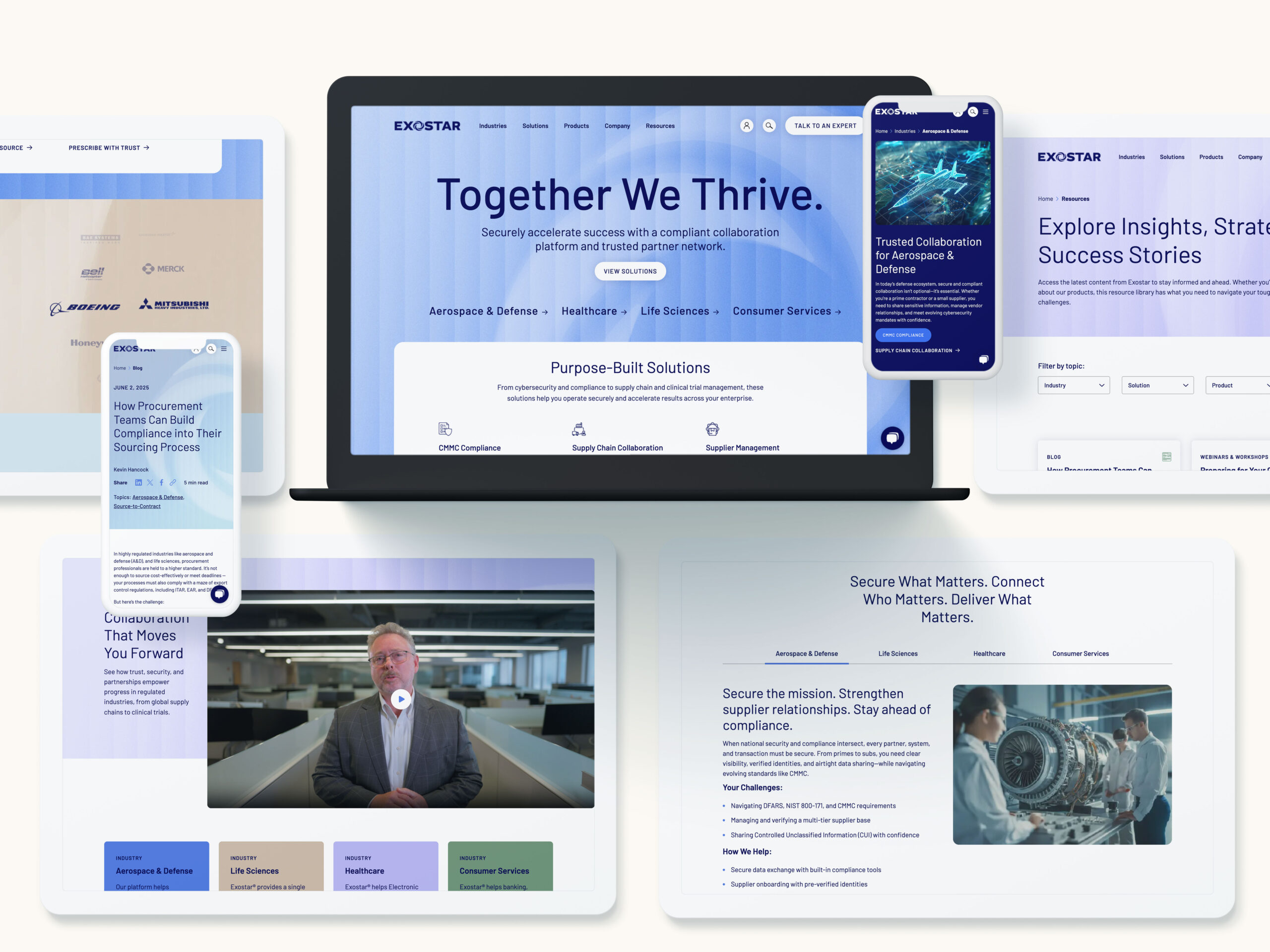
The Future of Personalization in B2G Procurement
AI and generative engines are changing the landscape. Within compliance, these technologies can:
- Enhance stakeholder insights by analyzing publicly available data trends
- Optimize content for discoverability in AI-driven search (Generative Engine Optimization, or GEO)
- Enable omnichannel engagement, combining digital, in-person, and virtual touchpoints
The future belongs to marketers who balance technology with strategy, delivering personalized messaging that resonates across every stakeholder and procurement stage.
Driving Meaningful Stakeholder Engagement in B2G
B2G personalization is about more than customized messaging—it’s a strategic approach that aligns content, timing, and stakeholder needs while staying compliant and ethical. When marketers apply these principles, they gain:
- Stronger relationships with procurement stakeholders
- Increased trust and credibility
- Better outcomes on bids and contract awards
Bluetext helps B2G marketers navigate the intersection of personalization and procurement with strategies that work. Contact us to craft campaigns that resonate with your stakeholders.
For decades, search engine optimization (SEO) has been the cornerstone of digital visibility. Brands climbed the SERP ladder by fine-tuning keywords, metadata, backlinks, and technical performance. But as we enter a new era of information retrieval, one thing is clear: search is no longer just about search engines—it’s about AI.
From ChatGPT to Gemini, Claude to Perplexity, Large Language Models (LLMs) now answer millions of queries daily. Users aren’t clicking links—they’re receiving summaries. For marketers and content creators, that’s both a threat and an opportunity. The new challenge? Becoming the source behind the AI answer.
Enter LLMO and AEO—two game-changing approaches to digital strategy that help ensure your content surfaces in this AI-first discovery landscape.
What Is LLMO? Understanding Large Language Model Optimization
LLMO stands for Large Language Model Optimization—the practice of crafting content that LLMs can read, understand, trust, and surface in generated outputs. Unlike traditional SEO, which optimizes for web crawlers like Googlebot, LLMO focuses on the way AI models digest and regenerate language.
LLMs don’t operate like search engines. They don’t “rank” content by authority alone. Instead, they:
- Interpret semantic meaning
- Generate answers based on contextual reliability
- Use natural language understanding to surface the most helpful response
- Rely on internal training data and real-time search tools to cite sources
If your content isn’t readable, factual, and structured in a way that an LLM can parse, your brand may never make it into the answer—even if you’re ranked #1 on Google.
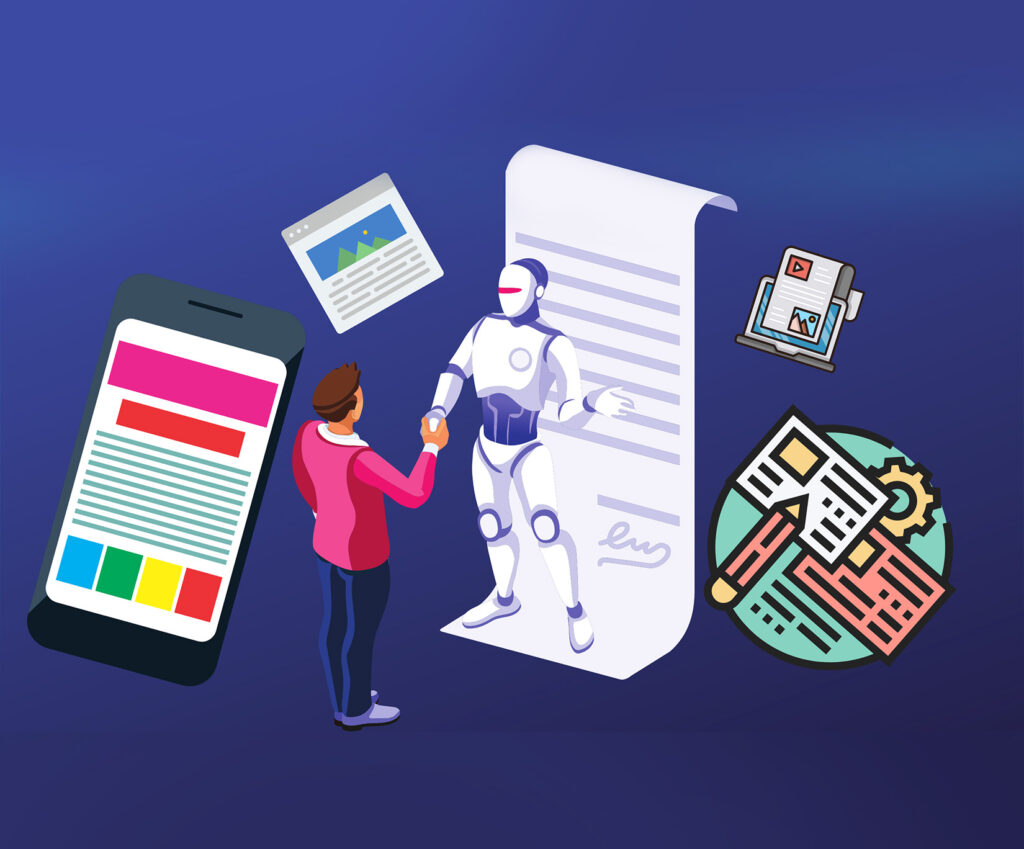
What Is AEO? Introducing Generative Engine Optimization
Answer Engine Optimization (AEO) is the practice of optimizing for AI-based search engines and conversational platforms. Think of it as the evolution of SEO, reimagined for tools like:
- Perplexity (which cites sources in responses)
- You.com
- ChatGPT with browsing
- Google SGE (Search Generative Experience)
Where SEO is about being ranked, AEO is about being referenced.
These AI engines often quote, link to, or paraphrase content. AEO helps ensure your brand’s content is:
- Discoverable by AI crawlers and retrievers
- Structured for AI citation and reference
- Trusted as a reliable source by generative algorithms
Together, LLMO and AEO form a dual-layered strategy for the future of digital visibility.
Why LLMO and AEO Matter More Than Ever
The Decline of the Click
We’ve entered the zero-click era, where generative answers mean users don’t need to click through to your website. This has profound implications:
- Organic CTRs (click-through rates) are falling
- Even top-ranking pages see fewer visits
- Users trust AI-summarized answers more than traditional snippets
The Rise of AI-Mediated Discovery
Increasingly, business leaders, researchers, and consumers are turning to LLMs for fast, conversational insight. For B2B brands especially, being included in the answer is the new mark of authority.
Visibility ≠ Ranking
It’s possible to rank #1 on Google and be ignored by generative tools—or to rank nowhere and still be quoted in ChatGPT. AEO is how you bridge that gap.
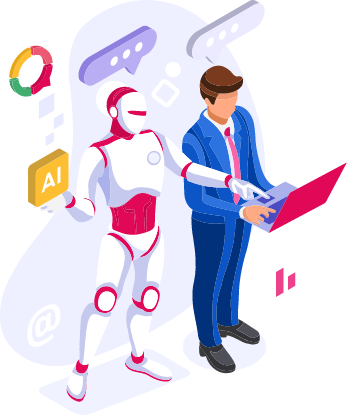
How LLMs Consume and Cite Content
To optimize for LLMs, we need to understand how they work:
- LLMs prefer clear, authoritative content with natural language flow
- They extract structured insights—especially from lists, FAQs, and headers
- They trust brands with high topical authority (frequent mentions, consistency, backlinking)
In short, LLMs reward what humans also value: clarity, expertise, and relevance. But unlike humans, they need structure and signals to understand your content’s reliability.
Core Tactics for LLMO and AEO Success
1. Create Conversational, Contextual Content
LLMs are trained on how people speak. That means:
- Write naturally, not robotically
- Use FAQs, how-tos, and question-answer formats
- Answer specific queries in plain, clear language
- Incorporate synonyms, related phrases, and user intent
Example: Instead of “Answer Engine Optimization for B2B SEO,” try “How can B2B marketers optimize their content to appear in AI-generated answers?”
2. Focus on Semantic & Long-Tail Keywords
Traditional keyword stuffing doesn’t work in LLM land. Instead:
- Emphasize search intent over search volume
- Use long-tail queries that mimic how people speak to AI
- Include variations of core terms to build contextual weight
AEO-optimized keywords:
“Cited by ChatGPT,” “content that appears in Perplexity AI,” “optimize for AI search results,” “LLMO strategy for marketing teams.”
3. Structure Content for Machine Interpretation
Just like search engines love schema, so do LLMs. Your formatting matters:
- Use clear H1, H2, H3 structure
- Break up walls of text with bullets and numbered lists
- Use tables, charts, and bolded terms for scannability
- Add schema markup (FAQPage, HowTo, Article) to signal intent
Tools like Perplexity often favor clearly segmented guides over narrative-only blog posts.
4. Build Depth, Authority, and Relevance
LLMs reference content that feels complete and authoritative. That means:
- Go deep—1,500+ words often outperform thin content
- Back up points with data, quotes, and examples
- Demonstrate topical consistency across your site (e.g., multiple blogs on LLMO, AEO, AI content strategy)
Your brand needs to sound like and act like an expert.
5. Optimize Metadata & Internal Links
AI tools ingest metadata. Be intentional:
- Write natural-language meta titles and descriptions
- Use internal links to cluster related content and establish authority on a topic
- Include descriptive anchor text (e.g., “see our guide to AI-ready content”)
This not only helps traditional SEO—it gives AI models contextual signals that elevate your visibility.
6. Citations, Mentions & External Signals
Generative models often cite based on frequency and trust. You can increase your chances by:
- Earning backlinks from high-authority sites
- Using original statistics or frameworks worth referencing
- Publishing on reputable third-party platforms (e.g., Medium, Substack, LinkedIn)
Pro Tip: AI models love linking to well-structured thought leadership—especially if it includes unique data, expert commentary, or industry frameworks.
7. Monitor Your AI Visibility
You can’t improve what you don’t measure. Use tools to:
- Search your brand in ChatGPT, Gemini, and Perplexity
- Look for citations, summaries, or paraphrased answers
- Track whether your domain is being pulled in AI overviews
As this space evolves, visibility in generative search may become a key digital marketing KPI.

What LLMO + AEO Mean for Marketers
SEO isn’t dead—but it’s evolving. Marketing teams who embrace LLMO and AEO will:
- Increase their AI-era visibility
- Reduce dependency on traditional SERPs
- Future-proof their content investments
- Position their brand as an authoritative, AI-trusted resource
In short, it’s not enough to be seen. You need to be cited. Trusted. Used.
Let’s Talk About Your AI Visibility
At Bluetext, we help brands thrive in the age of AI search. From content strategy to metadata, structure, and authority-building, we craft marketing that performs across platforms—including the ones without a click-through.
Reach out today to ensure your content gets seen, cited, and surfaced—wherever your audiences are searching.
In today’s digital-first world, B2B SaaS companies face increasing competition for attention. As buyers shift to using AI-powered tools like ChatGPT and Microsoft Copilot for research and decision-making, traditional SEO is no longer enough. Answer Engine Optimization (AEO) is emerging as the new frontier to ensure your SaaS products are visible, relevant, and compelling within AI-driven search environments.
What is Answer Engine Optimization (AEO)?
AEO involves optimizing your digital content so that AI generative engines can easily interpret, extract, and surface your information in conversational search results. Unlike traditional SEO that targets keyword rankings on search engine results pages (SERPs), AEO focuses on clarity, context, and structured data that AI models use to generate natural language responses.
Why AEO is Critical for B2B SaaS Companies
The B2B SaaS buyer’s journey is complex, often involving multiple stakeholders and stages of research. Generative AI engines simplify this process by providing quick, accurate answers through conversational interfaces. If your SaaS content is not optimized for AEO, you risk missing out on high-intent traffic channeled through AI-powered searches.
Key AEO Strategies for SaaS Companies
1. Create Conversational Product Descriptions
Write product pages that mimic how customers naturally ask questions about your SaaS offerings. Use language that addresses pain points, benefits, and solutions clearly.
2. Build and Optimize Knowledge Bases
Develop comprehensive FAQs and support documentation structured with clear headings and concise answers. This helps AI engines pull precise snippets for user queries.
3. Leverage Schema Markup for SaaS Features
Implement structured data for product details, pricing, reviews, and integrations to enhance AI comprehension and eligibility for rich results.
4. Use Use Case Storytelling
Share specific scenarios where your SaaS solves customer challenges. AI engines favor content that provides context-rich examples rather than generic descriptions.
5. Focus on Semantic Keyword Integration
Beyond exact keywords, incorporate related terms and phrases that reflect how users converse with AI assistants. This improves your content’s contextual relevance.
How AEO Supports SaaS Marketing Goals
Optimizing for AEO benefits SaaS marketers by:
- Increasing AI-driven lead generation through higher visibility in conversational answers.
- Reducing friction in the buyer journey by providing instant, relevant information.
- Enhancing brand authority as a trusted, AI-recognized source of knowledge.
- Expanding reach in voice search and digital assistants commonly used by business professionals.
Common Challenges and How to Overcome Them
Many SaaS companies struggle with AEO because their content is overly technical or keyword-stuffed, which AI engines can misinterpret or penalize. To succeed:
- Simplify language without losing industry accuracy.
- Avoid jargon-heavy text by including clear definitions.
- Regularly audit and update your content to keep pace with product changes and AI algorithm updates.
Answer Engine Optimization is essential for B2B SaaS firms aiming to thrive in the age of AI search. By integrating AEO strategies into your marketing efforts, you ensure your solutions are discoverable, credible, and persuasive to the modern buyer.
If you want to future-proof your SaaS marketing with advanced AEO tactics, contact Bluetext today for expert guidance and support.
Answer Engine Optimization (AEO) is no longer just a buzzword—it’s a crucial strategy for companies looking to thrive in the age of AI-driven search. With conversational AI tools like ChatGPT, Microsoft Bing Chat, and other generative models transforming how users seek and receive information, optimizing for AEO means adapting your digital content to be AI-friendly, context-rich, and semantically meaningful.
Why Traditional SEO Isn’t Enough in the AI Era
Traditional SEO techniques focus largely on keyword rankings, backlinks, and technical site health to improve visibility on standard search engines. While these remain important, generative AI engines evaluate content differently. They emphasize:
- Contextual relevance over keyword density.
- Clear, authoritative answers over content volume.
- User intent understanding rather than just query matching.
This shift means marketers need to rethink how they create and structure content for better performance in AI-powered search results.
Advanced AEO Strategies for Marketers
1. Optimize Content for AI “Answer Engines”
AI engines generate responses based on data patterns and context. Provide clear, concise answers within your content, especially near the beginning of pages or sections. Think like a helpful AI assistant—what’s the best way to deliver your key message in one or two sentences?
2. Implement Rich Data Integration
Supplement your content with structured data, knowledge graphs, and linked data. This allows AI to connect the dots between concepts and entities, enhancing your content’s discoverability and trustworthiness.
3. Focus on User Intent with Conversational Content
Map out your audience’s common questions and conversational queries. Develop content that anticipates follow-up questions and provides layered information to satisfy deeper exploration.
4. Enhance Content with Multimedia and Interactive Elements
Generative engines often pull from diverse content types. Include images with descriptive alt text, videos with transcripts, and interactive tools that provide additional context or personalized information.
5. Maintain Content Freshness and Authority
AI models favor up-to-date information. Regularly update your content to reflect new data, trends, or insights. Also, build author authority by linking to credible sources and showcasing expert authorship.
6. Leverage AI Tools to Audit and Improve AEO Readiness
Use emerging AI tools to analyze your content’s effectiveness for generative engines. Tools can help you identify gaps in context, relevance, and structure, guiding optimization efforts.
Common Pitfalls to Avoid in AEO Optimization
- Overloading content with keywords—AI values natural language, not keyword stuffing.
- Neglecting schema markup—structured data is critical for AI comprehension.
- Ignoring user experience—slow load times and confusing layouts reduce content’s value.
- Publishing vague or generic content—AI favors specificity and clarity.
Measuring Success in AEO
Tracking AEO performance requires a new set of metrics:
- Visibility in AI-powered answer boxes and chat responses.
- Engagement with conversational AI interfaces.
- Direct traffic from voice and AI assistant queries.
- Improved brand mention and citation in AI-generated content.
Combine these with traditional SEO KPIs for a comprehensive view of your digital presence.
Getting Started with AEO: Practical Steps for Your Company
- Conduct a content audit focusing on clarity, structure, and relevance for AI.
- Add or improve schema markup across your site.
- Develop a knowledge base or FAQ section optimized for conversational queries.
- Train your content team on writing for AI comprehension.
- Experiment with AI tools to refine your AEO strategy continually.
The Future is AEO — Are You Ready?
Answer Engine Optimization is transforming how companies compete in search and content discovery. By mastering advanced AEO strategies, you can ensure your brand stands out in AI-driven conversations and captures new audiences where traditional SEO alone falls short.
At Bluetext, we help forward-thinking companies navigate this new frontier with tailored AEO strategies that integrate seamlessly with existing marketing efforts. Ready to elevate your AI search presence? Get in touch with Bluetext today.